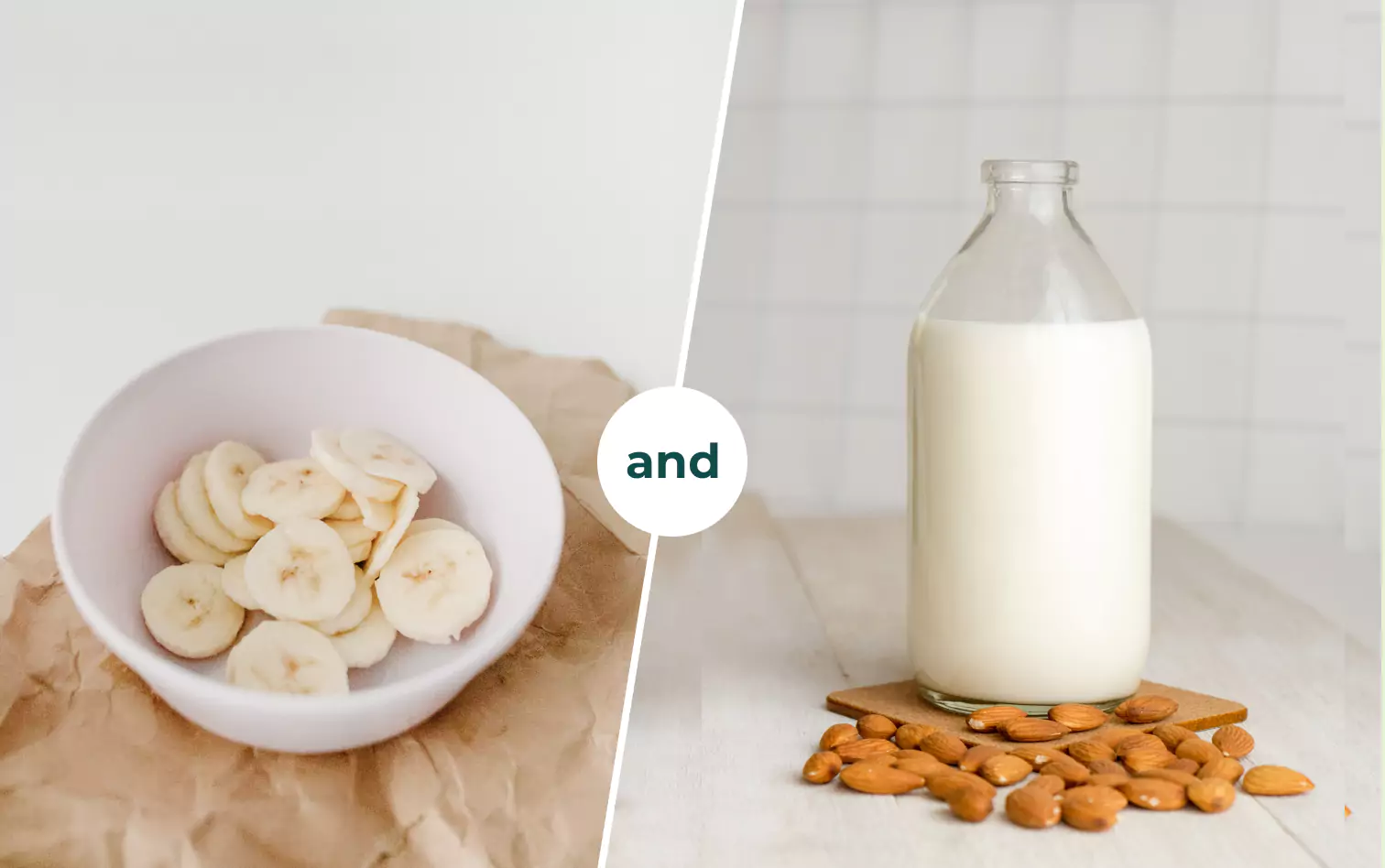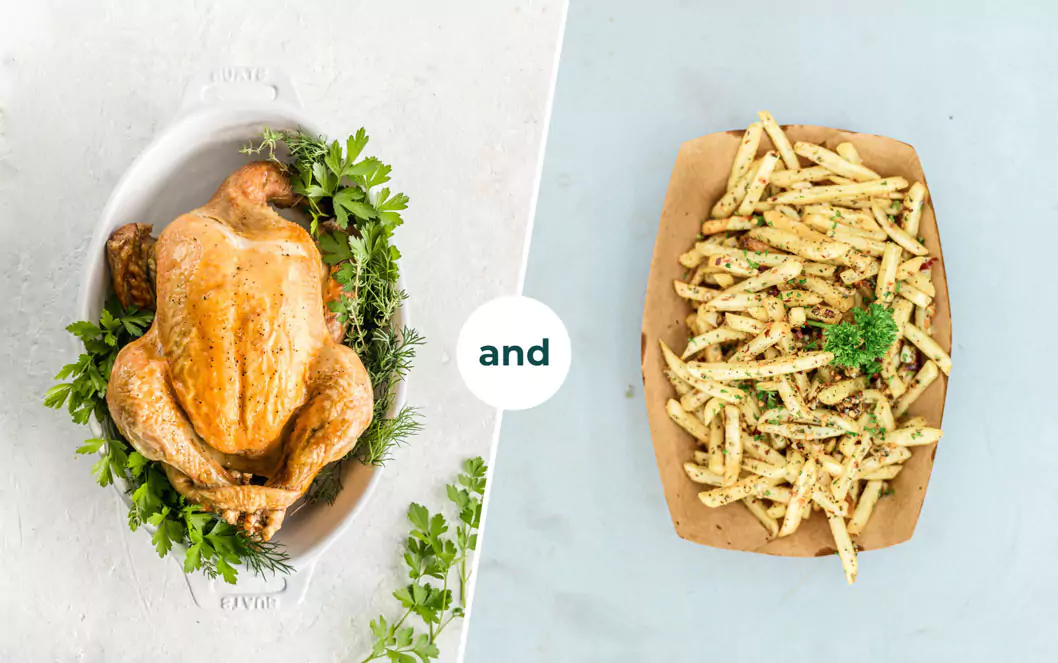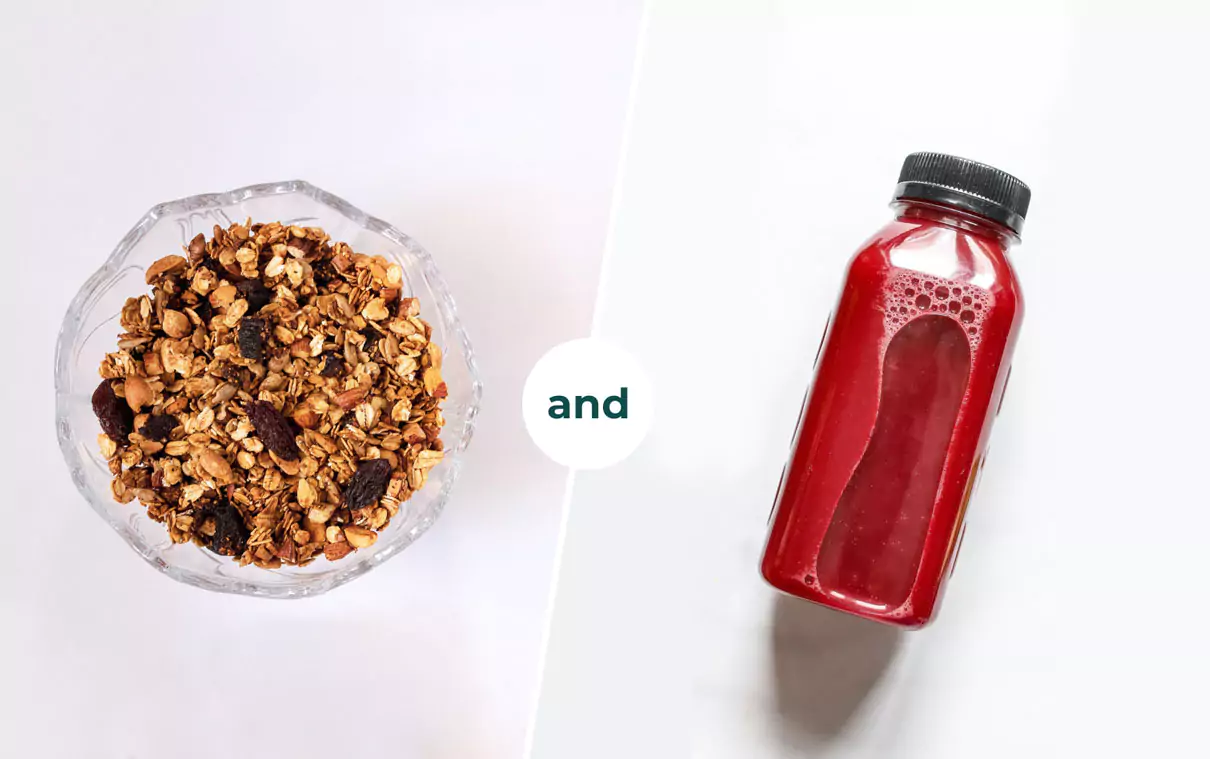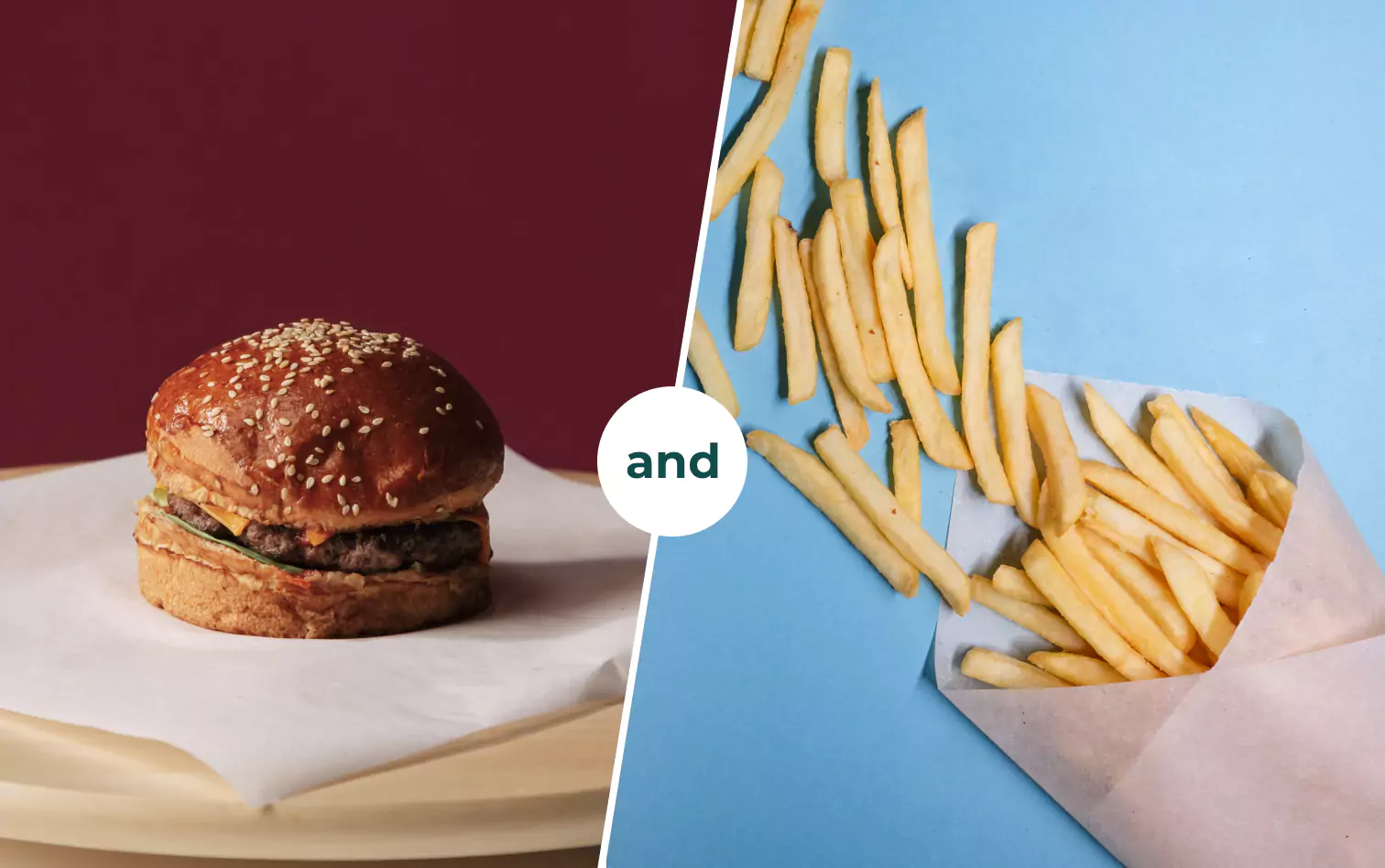Pairing Your Food: Are there Good and Bad Combinations?

Key Takeways
Are some food combinations better than others? Will pairing your orange juice with your breakfast cereal wreak havoc on your digestive system? We’ve already gone over the basics of food combining. So, you know that even though combining some food groups may work better for some people than others, there's no hard-and-fast rule that makes any of them wholly 'good' or 'bad.'
But there's so much information about specific food combinations that it can be challenging to ignore. For example, some Ayurvedic beliefs consider some food combinations like pairing eggs with beans or melons, bad for your health. According to Ayurveda, these food combos can have many side effects, from weight gain and indigestion to bloating and blood sugar spikes. But there's a little more to it than that.
Do Best and Worst Food Combinations Exist?

Not really. A blanket list of ‘best and worst’ food combinations may not be the ideal way to plan your meals—but some foods can be better for you than others. So, what’s all this about how some food pairings are better than others? And are there bad combinations that you should avoid altogether? It’s not necessarily as simple.
For some ‘bad’ food combinations, a slight modification to the meal can turn them from unhealthy to healthy options. And there’s no one-size-fits-all when it comes to your diet, so it may also depend on what works better or worse for your specific body and nutritional needs.
The best way to work out what foods and food combos work best for your health and blood sugar levels is by consulting a nutritionist or registered dietitian. But since there’s so much information about different combinations and how terrible they can be for your health, we thought we’d help you sort through them.
The Nutrisense Nutrition Team took a look at a few popular ‘best and worst’ food combinations out there to bring you more information about each option. Read on to see what they think of each combination and their recommendations for making them healthier.
Bananas + Milk

Is this combination good? No, combining bananas and milk is not healthy.
Why: When you combine these two foods, you double down on consuming ‘naked’ carbohydrates.
How to Improve This Food Combination
- Dress it up! Whenever you consume a carbohydrate (like a banana or a glass of milk), make sure you pair it with fat and/or protein. It can help create a smaller, more gradual glucose response. Examples of “dressing up” your food combination could be adding a handful of nuts, peanut butter, or a hard-boiled egg to your plate.
- Always be aware of your portion sizes. Try half a banana and four ounces of milk (and don’t forget your protein), rather than a banana, and a large, unmeasured glass of milk.
- Have this as a snack (with protein) if you are hungry after breakfast or even better try it as a post-workout snack. Remember that it may not be a good option for breaking a fast after an extended period of fasting as it is harder for the body to process carbs at that time.
Pizza + Beer / Pizza + Soda

Is this combination good: Not great for glucose, but darn, it tastes good!
Why: For meals that combine a lot of starch and sugar plus fat, you will usually see a delayed glucose response. The fat in your meal slows down the digestion and absorption of the glucose, leading to glucose being released in bouts afterward. Some fat in your meals is helpful for the same reason—like nuts with fruit. But too much makes your body continue to "process" the food for a long time.
How to Improve This Food Combination
- Limit your serving of pizza to one or two slices.
- Eat some fresh, non-starchy veggies or a salad before your meal.
- Choose a thin crust.
- Switch to diet soda or, better yet, sparkling water.
- Choose light beer versus an IPA/lager. Light beer, red wine, and hard alcohol beverages are associated with a smaller immediate impact on postprandial glucose—but you may see a higher fasting value.
- Eat this type of meal earlier in the day (lunch versus dinner) when you are more insulin sensitive.
Meat + Potatoes

Is this combination good: Yes, this food pairing can be a good combo.
Why: A solid protein is present with the starchy carbohydrate (potato). Plus, potatoes are a wholesome carb source, not packaged or processed.
How to Improve This Food Combination
- Add some fibrous vegetables to your plate to help slow glucose absorption and mitigate glucose peaks. Consider a salad with vinegar-based dressing and/or cruciferous vegetables on the side like broccoli or cauliflower.
- Practice meal sequencing with meals like this one, meaning you will consume the meat and vegetables first—before the potatoes.
- Consider the portion of potatoes. A small portion of potatoes will be better for blood glucose than a larger portion. Stick to a portion that is one-fourth (or less) of your plate.
Cereal + Fruit Juice

Is this combination good: Cereal and fruit juice might commonly appear on breakfast tables in films, but this combination is not healthy for you.
Why: Both are processed carbohydrate sources that lack natural fiber content and have no protein or fat.
This combination can quickly elevate glucose and potentially lead to a glucose crash after you eat. Combinations like this leave you feeling hungry, developing cravings, and can sometimes cause mood changes.
How to Improve This Food Combination
- Choose a better cereal. Opt for an option with minimal amounts of added sugar (no added sugar is best) and ingredients. Consider something like Rice Chex or plain Cheerios or swap for a fiber-containing option like oats or oatmeal.
- Pair this combination with good protein content like a quality protein powder or shake. You can even use that as the “liquid” instead of milk.
- You need to be careful about drinking fruit juices because these liquid carbs can absorb much quicker than chewing a fresh piece of fruit. Since both cereal and fruit are carb sources, keep portion size smaller with the fruit if you choose to make cereal your primary carbohydrate source. Adding a one-fourth cup of berries to your oatmeal is a great example.
- Adding fats to combinations like this can help slow glucose absorption and prevent you from eating naked carbs. Topping the oats with a sprinkle of nuts is a great way to do this, and it will also add a nice crunch to the dish.
Burger + Fries

Is this combination good: This is a combination that’s delicious and even comforting to most, but sadly it’s not a healthy food combination.
Why: It’s a high fat and starch combination, especially with the highly inflammatory oil from the fries being deep-fried (oil is often reheated at high temperatures at fast-food restaurants). Eating high-fat and high-starch meals together can lead to more significant glucose “hills.” It can also lead to poor glucose recovery (when glucose takes a long time to return to baseline).
How to Improve This Food Combination
- Decide which carbs are worth it, the bun or the fries. Often, it’s tough to stop at one, so if you’re team fries, go for it, but make sure to order the smallest portion or split it with someone. Then opt for a lettuce-wrapped burger. If you choose to have the bun and no fries, substitute them for fresh, non-starchy vegetables or have a salad before your meal.
- Try to time your meal for earlier in the day. A perfect time to be able to enjoy this is during daylight hours. It can also help your glucose recovery to get in some movement or a solid training session before or around two hours after eating it.
Wine + Cake

Is the combination good: Realistically, this is not a healthy combination. Sometimes a little splurge is fun on special occasions, though.
Why: Alcohol of any kind is a toxin to the body. When pairing it with a high-sugar treat like cake, it can give off varying glucose responses. Since your body cannot store alcohol, it will always prioritize metabolizing it over other substrates. That means the glucose response from the cake may not hit the bloodstream until later—after the alcohol has been taken care of.
On the flip side, some people may experience a rapid glucose spike. It depends on how you handle alcohol and the portion size of the cake and wine.
How to Improve This Food Combination
- Moderation is a dietitian's favorite word. You can enjoy alcohol and sweet treats on special occasions while supporting better glycemic responses by being mindful of portion sizes. For example, a serving of wine is five ounces. It may be helpful to visually see what that looks like for future reference (use a food scale or a liquid measuring cup).
- Drier wines tend to have less sugar per serving, so pick these instead of sweeter wines. Keep the portion of the cake reasonable and responsible. A good rule of thumb is the length and width of two fingers.
- Eat a balanced meal beforehand. Have a meal that contains at least 25-30 grams of protein and some fibrous veggies. It helps with satiety levels before you hit the drinks and cake. It also helps with better glucose response.
Beans + Eggs

Is the combination good: Yes, this is a healthy and balanced combination.
Why: Beans and eggs are a great combination of protein, fat, and fiber that make a balanced meal promoting a stable postprandial glucose response.
How to Improve This Food Combination
- To improve the digestion and absorption of beans, soak them before you cook them. Legumes contain phytic acid that can block the absorption of certain nutrients. They also have larger carbohydrate molecules from the outer coating that can be difficult to digest. By soaking the beans, you can boost nutrient value and digestibility. Here is some more information about how to soak them.
Eggs + Melons

Is the combination good: Yes, this is a healthy and well-balanced food combination.
Why: Eggs are a great source of protein, choline, and lutein. And melons are a rich source of vitamin C and are very hydrating due to the high water content. Consuming eggs with a whole carbohydrate source like melon is a great way to provide a consistent energy source (versus cereal and fruit juice for breakfast). They make a much better choice to fuel your morning.
You may tolerate some whole-food carbohydrates better than others. Some also produce a lesser glucose swing than processed starches, given that the cellular walls are intact, causing slower digestion and slower glucose release.
How to Improve This Food Combination
- Eat the eggs first. Meal sequencing is super powerful in blunting spikes. Additionally, some people are more carb sensitive first thing in the morning, so generally, we will have a better glucose response if we start with protein.
- Since this isn't an unhealthy combination, it would also be an excellent option for a quick snack.
Green Tea + Milk

Is the combination good: The research is mixed. However, there is no big-picture concern with adding a bit of milk to your tea.
Why: First off, most studies have been done with black tea. Studies show that milk may impact the absorption of some antioxidants. The casein in milk may bind to flavonoids, thereby canceling their beneficial effects. Dairy products like milk may also cancel out the cholesterol and blood-pressure-lowering effects of tea.
How to Improve This Food Combination
- Try to brew your tea for longer. A small study shows that this may help to improve antioxidant absorption.
- Milk contains mostly carbohydrates but does contain some protein so it may be a good choice if a small amount of milk is added.
- Many people add honey to their tea and this in combination with the milk will likely cause a larger glucose response so avoid adding sugar or honey to tea or consider an alternative such as stevia or monk fruit.
Peanut Butter + Jelly

Is the combination good: This food combination gets a possible positive review. It will depend on your body and how you react to different foods.
Why: This is a great food to test out while wearing a CGM to understand your unique glucose threshold fully. For some, the combination of two slices of bread, plus the simple sugars found in jelly, can be too much carbohydrate content to handle in one sitting. Others may have no problem tolerating this classic lunch.
Watch out for peanut butter with added sugars and hydrogenated oils. We want to avoid this. Some jams also have a lot of added sugars, so try to shop for whole fruit jams with no added sugars.
How to Improve This Food Combination
- Choose 100 percent whole wheat bread for more fiber.
- Go with thin-sliced bread for fewer carbs.
- Meal sequence! Add more protein before eating the sandwich, such as a handful of nuts, a hard-boiled egg, an ounce of cheese, and some fibrous, non-starchy veggies.
- Take a 15-minute walk after you eat to help your muscles uptake the incoming glucose
- Choose peanut butter with one ingredient: peanuts. Always check your nutrition labels for added sugars.
- To lower your added sugar from the jelly, try a chia seed fruit spread.
Find the right Nutrisense programto turn insight into progress.
Go Beyond Glucose Data with Nutrisense
Your glucose can significantly impact how your body feels and functions. That’s why stable levels are an important factor in supporting overall wellbeing. But viewing glucose isn't enough. Nutrisense, you’ll be able to learn how to use your body's data to make informed lifestyle choices that support healthy living.
One-to-one coaching
Sign up to access insurance-covered video calls to work with a glucose expert: a personal registered dietitian or certified nutritionist who will help tailor your lifestyle and diet to your goals.
Monitor and measure what matters
With the Nutrisense CGM Program, you can monitor your glucose with health tech like glucose biosensors and continuous glucose monitor (CGM)s, and analyze the trends over time with the Nutrisense App. This will help you make the most informed choices about the foods you consume and their impact on your health.
Find your best fit
Ready to take the first step? Start with our quiz to find the right Nutrisense program to help you take control.

Katie is a dietitian at Nutrisense. With over 11 years of experience as a dietitian in many areas of nutrition, Katie has worked as a clinical dietitian within a hospital, as well as in the fields of diabetes, sports and performance nutrition, recovery from addiction, and general wellness. She’s also an athlete and has run 8 marathons, including the Boston Marathon.




